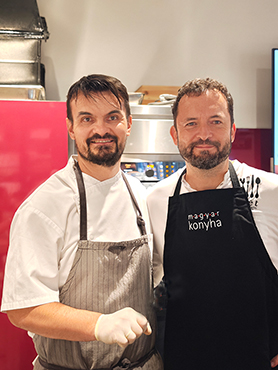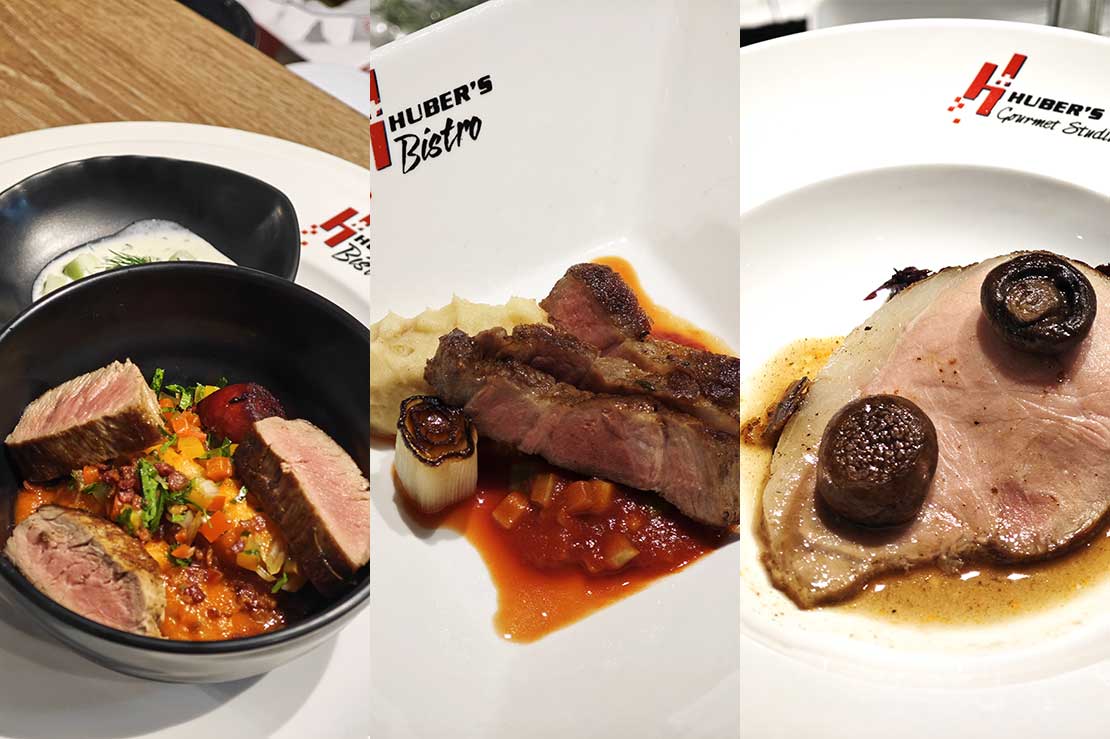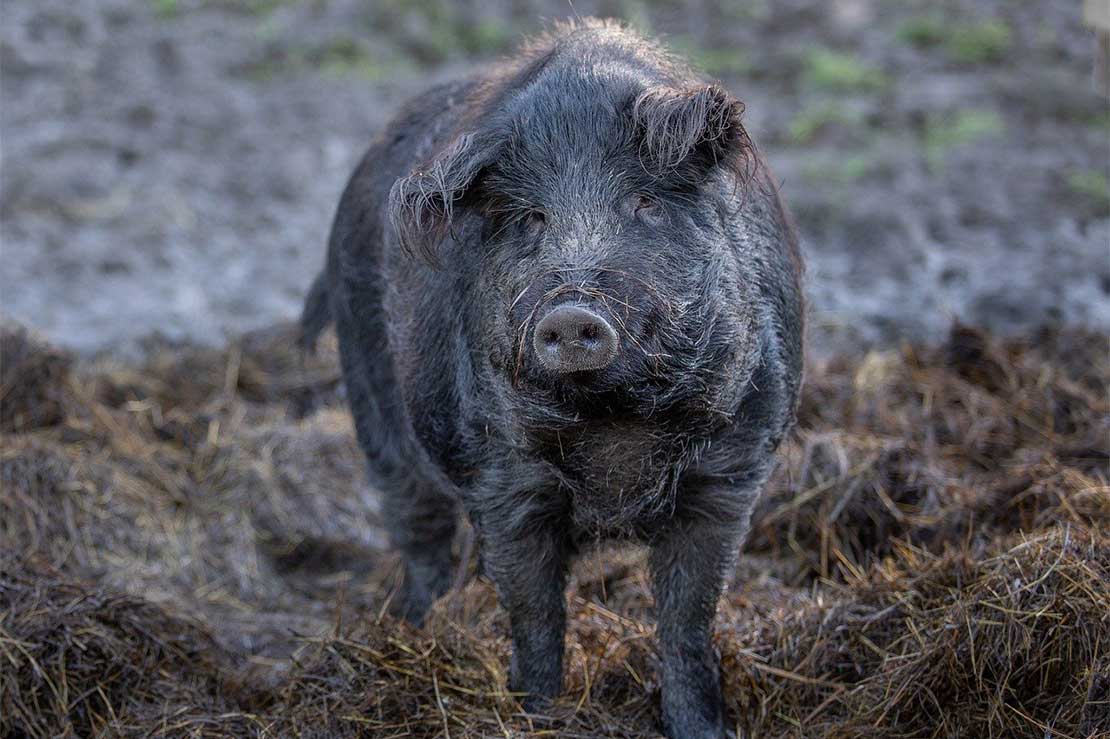[Top Image by Franz from Pixabay]
Ever tried the wagyu equivalent for pork?
Celebrated for its high fat content, intense marbling, and rich flavour, Mangalica (also known as Mangalitsa or Mangalitza in Hungarian) is recognised as a national treasure alongside paprika and Tokaji Aszú. It’s the world’s fattiest pork, with about 65%-70% fat and only 30%-35% lean meat.
 In Singapore’s first Hungarian Month campaign, the Mangalica Breeding Association (MOE) introduced this rare, curly-haired pig at Huber’s Butchery in Dempsey, with a cooking and tasting class led by Chef László Ruprecht, President of the Rural Fine Dining Restaurant Association in Hungary, and Chef Csaba Ádám, Head Instructor of the Culinary Institute of Europe.
In Singapore’s first Hungarian Month campaign, the Mangalica Breeding Association (MOE) introduced this rare, curly-haired pig at Huber’s Butchery in Dempsey, with a cooking and tasting class led by Chef László Ruprecht, President of the Rural Fine Dining Restaurant Association in Hungary, and Chef Csaba Ádám, Head Instructor of the Culinary Institute of Europe.
Mangalican dishes three ways
My most memorable dish was the Mangalica Tenderloin with Belly Potatoes & Peppers. It was a burst of flavours when biting into the pork belly that melts in your mouth, enhanced by rosemary and thyme, with a hint of smokiness and spice from the paprika. There’re also the smoked bacon and sausage, refreshed by cucumber and sour cream in each bite.
Mangalica Collar with Tomatoes & Celery was a comfort dish. The pork collar was juicy and tender, with a thin layer of fat that lubricated every bite. The dish brought out familiar flavours with the umami of the tomatoes and the herbaceous taste of the celery.
Served on a bed of sauerkraut was the Mangalica Short Loin with Cabbage & Mushrooms. The meat loaf was baked until the core temperature at 58°C, the perfect level from the chef’s experience, when the meat was taken out to rest before serving. Coupled by a red wine reduction and Szechuan pepper, the dish had a zing and a balance to the meatiness and texture.

From left: Mangalica Tenderloin with Belly Potatoes & Peppers, Mangalica Collar with Tomatoes & Celery and Mangalica Short Loin with Cabbage & Mushrooms [Photos: Kim Choong]
A Unique Heritage Breed
Mangalica, a “fat-type” pig, was discovered in the 19th-century Carpathian Basin. These pigs grased freely on Hungary’s fertile plains, needing little care. Hardy and disease-resistant, they were ideal for lard and sausage production, staples in the European diet. The breed we know today is a cross between Hungarian domestic pigs and European wild boars from Serbia and Austria, created in 1833 by the Habsburgs. In 1927, the communist government established the National Society of Fat-Type Hog Breeders (Mangalicatenyésztők Országos Egyesülete) to preserve the Mangalica breed, though this organisation later dissolved after communism fell.
In the 1970s, Mangalica was nearly extinct due to the rise of industrial farming, which favoured cheaper and leaner white pigs to meet consumer demand. When packaged food and refrigeration took off, the demand for Mangalica declined. Péter Tóth, the founder and president of MOE, discovered its plight by chance.
While studying winemaking in Spain in 1991, Péter was introduced by a friend to a unique ham made from Mangalica and learned of the breed’s near-extinction. Driven to save it, he bought every Mangalica he could find, saving 198 purebred pigs. Later studying genetic engineering, he gathered a group of farmers and founded the MOE in 1994 to preserve the original genetics of the Mangalica breed. Today, there are over 10,000 Mangalica in existence.
Mangalica Today: Certified and Revered
Mangalica is bred both in Hungary and abroad in places like Austria, the United Kingdom, and the United States. Similar to Kobe beef, only pigs raised in Hungary according to MOE standards are certified as true Hungarian Mangalica. With 25 registered breeders, Hungary’s Mangalica industry remains small and closely monitored, with each pig traceable through certification.
In his journey to bring Mangalica to Asia, Péter partnered with Romeo Alfonso of Meatlab in Hong Kong, which helps market Mangalica to Asia. Thanks to this collaboration, Mangalica is now available in Singapore through Huber’s Butchery, making it one of the first markets in Southeast Asia to carry this premium pork. The aim is to introduce Mangalica gradually to the rest of Asia.
Saving Them by Eating Them
It may seem paradoxical, but choosing to enjoy Mangalica pork actually helps to preserve this unique breed. Breeding Mangalica is costly and Hungarian farmers are paid less than other European countries. “Buying and eating Mangalica is the way to keep the farmers paid,” said Péter, by savouring Mangalica, we support its continued survival.
- T -
